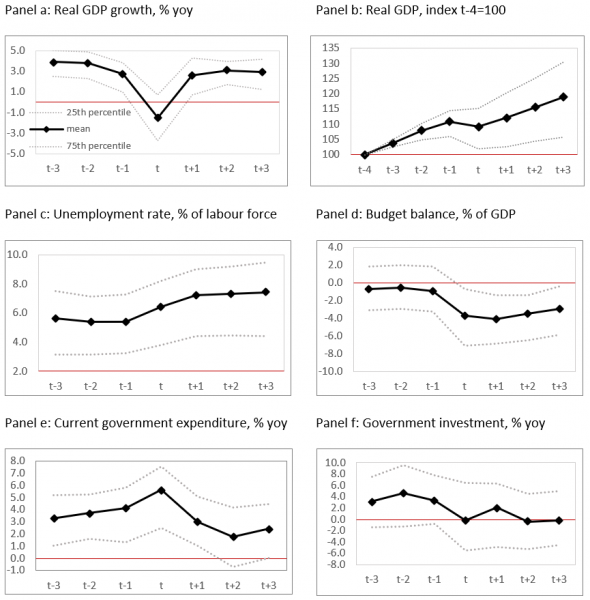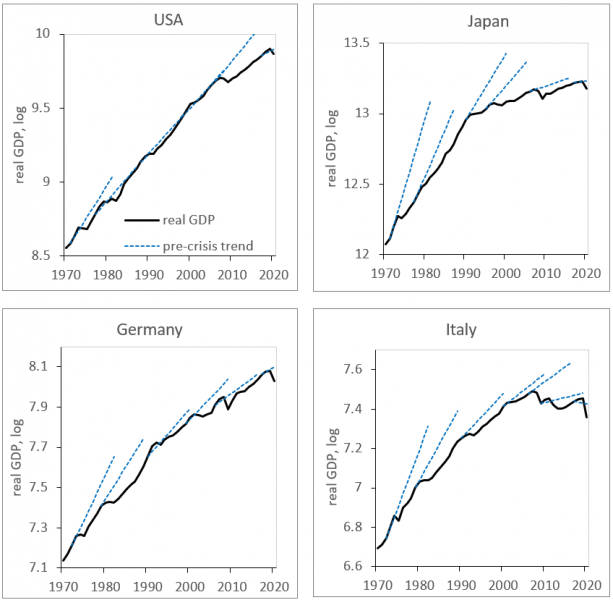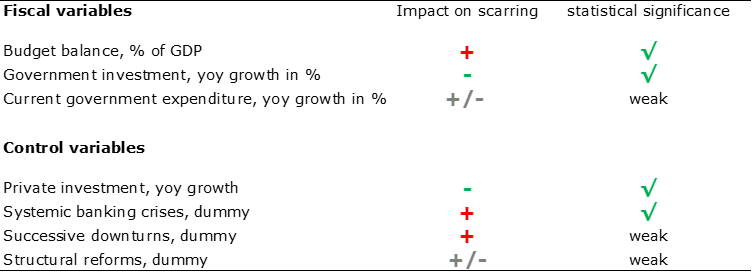References
Ball, L. (2014). Long-term damage from the Great Recession in OECD countries. European Journal of Economics and Economic Policies: Intervention, 11(2), 149-160.
Batini, N., Eyraud, L. Forni, L. and Weber, A. (2014). Fiscal Multipliers: Size, Determinants, and Use in Macroeconomic Projections, IMF Technical Notes and Manuals.
Blanchard, O.J., Cerutti, E. and Summers, L.H. (2015). Inflation and Activity − Two Explorations and their Monetary Policy Implications, IMF Working Paper WP/15/230.
Beveridge, S. and Nelson, C.R. (1981). A new approach to the decomposition of economic time series into permanent and transitory components with particular attention to measurement of the `business cycle’, Journal of Monetary Economics, 7(2), 151-174.
Cerra. V., U. Panizza, and S. C. Saxena (2013). International evidence on Recovery from Recessions, Contemporary Economic Policy, 31(2): 424–439
in’t Veld, J., M. Larch, M. and Vandeweyer (2013). Automatic Fiscal Stabilisers: What They Are and What They Do. Open Economy Review 24: 147–163, https://doi.org/10.1007/s11079-012-9260-6
Harding, D. and Pagan, A. (2002). Dissecting the cycle: a methodological investigation, Journal of Monetary Economics, 49(2), 365-381, https://doi.org/10.1016/S0304-3932(01)00108-8
Martin, R., Munyan, T. and Wilson, B.A. (2015). Potential Output and Recessions: Are We Fooling Ourselves? International Finance Discussions Paper, No. 1145.
Nelson, C R, and C R Plosser (1982). Trends and random walks in macroeconomic time series: some evidence and implications, Journal of Monetary Economics 10(2): 139-162.








